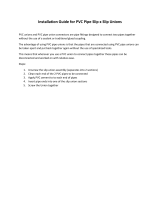
14
ous residue in pump liquid end. A Materials
Safety Data Sheet must accompany all returns.
All inquiries or parts orders should be addressed to
your local LMI representative or distributor.
4.3 PREVENTIVE MAINTENANCE
LMI pumps are carefully designed, manufactured,
assembled, and quality tested to give reliable ser-
vice with minimal maintenance. However, a weekly
maintenance check is recommended to visually
confirm proper operation of the pump.
Drive
Initially, change gear drive oil after the first 250
hours of operation. Then change drive oil after
every 4000 hours of operation or every six months,
whichever comes first. Refer to “Initial Start-up” in
Section 3, Operation, for information on recom-
mended oil and oil capacity.
NOTE: When adding oil, pour in a thin, slow
stream to avoid overflow.
Diaphragm Assembly
The Series G Model G diaphragm assembly should
be replaced every 4000 hours of operation to avoid
the possibility of failure. Refer to the instructions in
the “Corrective Maintenance” section.
Oil Seal
The Series G Model G oil seal should be replaced
every 4000 hours of operation to avoid the possibil-
ity of failure. Oil seal replacement requires the
removal of the diaphragm assembly, so it is recom-
mended that the oil seal and diaphragm be
replaced at the same time. Refer to the instructions
in the “Corrective Maintenance” section.
Check Valves
LMI recommends that check valve balls, seats,
gaskets, and o-rings be replaced on a annual
basis. If highly corrosive material (acids, slurries,
etc.) is being pumped, some applications may
require more frequent replacement.
To determine if check valves need maintenance,
disassemble the check valves following the instruc-
tions in the “Corrective Maintenance” section.
Inspect the ball check and seat for chemical or
physical damage. The ball should be perfectly
round and free of pits, mars, or scratches. The seat
should retain a sharp edge where the ball contacts
for proper sealing. If the seat edge is worn or dam-
aged, or has any pits, mars, or scratches, it should
be replaced. If the ball and/or seat is excessively
damaged, the replacement schedule should be
shortened accordingly. If the ball and seat are both
in good condition, the replacement schedule can
be lengthened.
Complete instructions for replacing worn check
valve parts are given in the “Corrective Mainte-
nance” section.
4.4 CORRECTIVE MAINTENANCE
BEFORE CARRYING OUT ANY SERVIC-
ING OPERATION ON THE METERING
UNIT OR PIPES, DISCONNECT ELEC-
TRICAL POWER FROM THE PUMP,
AND TAKE THE NECESSARY STEPS
TO ENSURE THAT THE HARMFUL LIQ-
UID THEY CONTAIN CANNOT ESCAPE
OR COME INTO CONTACT WITH PER-
SONNEL. SUITABLE PROTECTIVE
EQUIPMENT MUST BE PROVIDED.
CHECK THAT ALL PRESSURE HAS
BEEN BLED FROM THE PUMP DRIVE
AND PUMP LIQUID END BEFORE PRO-
CEEDING WITH DISMANTLING.
Cleaning Fouled Check Valves
Check valve assemblies are designed to be self
cleaning and should seldom need servicing.
Fouled check valves can usually be cleaned by
pumping a solution of mild detergent and warm
water (if compatible with liquid being pumped) for
15 minutes, followed by flushing with water.
4.4.1 Check Valve Replacement
General
Before beginning work on the valve assemblies,
make sure the shut-off valves are closed and that
pressure has been bled from the system. When
replacing the valves, take care to systematically
change their O-rings and/or gaskets. Take care to






















